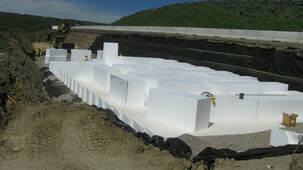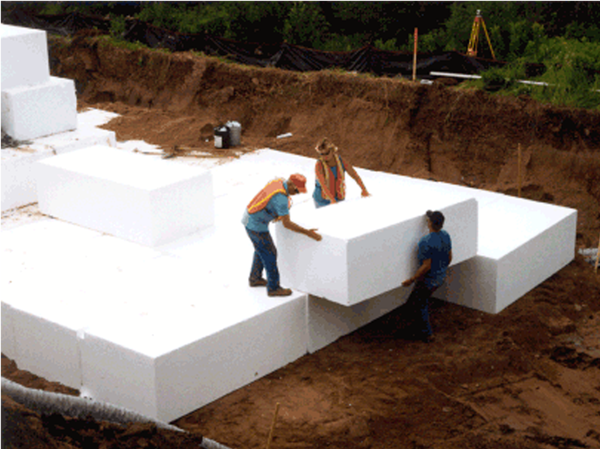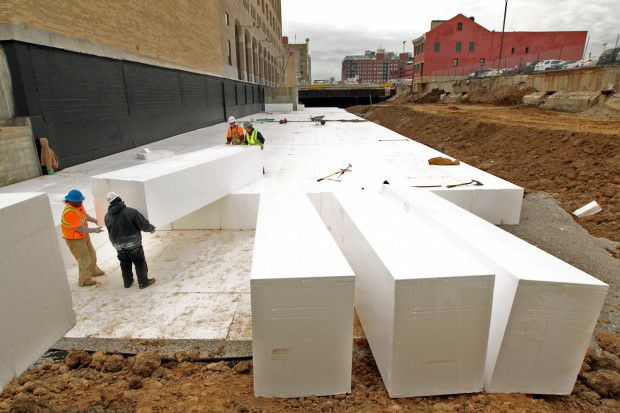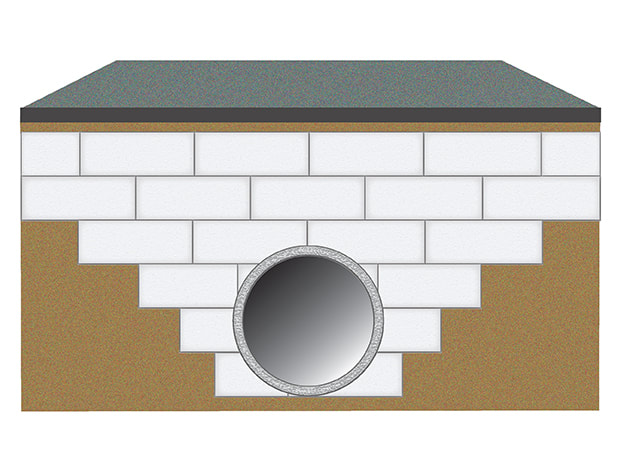
Geofoam is a lightweight fill in compliance with ASTM D6817 that gives you control over your geotechnical project. Foam-Control Geofoam is engineered to give you the greatest possible control for your project application: from design and timelines, to materials and costs, and — ultimately — control over your results. EPS geofoam is inherently multi-functional, which makes it effective to use in a wide variety of applications. It offers special advantages for construction on soft ground, slope stabilization and retaining walls. EPS geofoam has been used in road and airfield pavements and railway track systems, beneath refrigerated storage buildings, sports arenas and storage tanks to prevent ground freezing and heaving and in below-ground building segments to reduce seasonal
heating and cooling requirements. EPS geofoam enables engineers, architects, and builders to design for key geosynthetic functions and select the best combination of products to achieve project goals. With unprecedented
strength and flexibility, EPS geofoam also offers innovative solutions to a range of problems, including protection
from earthquake shock and noise and vibration dampening.
heating and cooling requirements. EPS geofoam enables engineers, architects, and builders to design for key geosynthetic functions and select the best combination of products to achieve project goals. With unprecedented
strength and flexibility, EPS geofoam also offers innovative solutions to a range of problems, including protection
from earthquake shock and noise and vibration dampening.
EPS geofoam can be used to create topography without adding significant load to underlying structures and services. Some examples of this application include creating roof gardens for urban buildings. EPS geofoam can be used as
backfill behind retaining and buried structures to greatly reduce lateral pressures on the structure. Because the horizontal pressure acting on a retaining wall is proportional to the weight of the backfill, a less robust retaining structure
is needed if the backfill soil in the active zone behind the retaining wall is replaced with EPS geofoam.
backfill behind retaining and buried structures to greatly reduce lateral pressures on the structure. Because the horizontal pressure acting on a retaining wall is proportional to the weight of the backfill, a less robust retaining structure
is needed if the backfill soil in the active zone behind the retaining wall is replaced with EPS geofoam.
At Martin Borchert we have started to sell Geofoam and are excited to be a part of this exciting piece of material that is so versatile and vast with options. Call us today for a quote or for any information on Geofoam
You can also check Geofoam out directly by clicking below!
You can also check Geofoam out directly by clicking below!
Above is a video explaining Geofoam and a basic introduction to how it's used and installed and a slight history lesson!
Contact Us
We would love to hear from you!!
If you need a quote or to place an order, drop us an email.
If you need a quote or to place an order, drop us an email.
|
|
Martin Borchert Company
1000 Vine St. North LIttle Rock, AR 72114 Phone Number: 501-372-3136 Open Monday-Friday: 7:30 - 4:00 Closed Saturday and Sunday |


